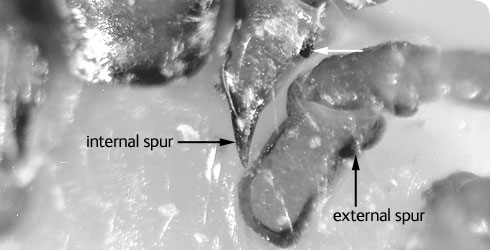Biology
Life cycle
The tick’s life cycle comprises the egg, 6--legged larva, 8--legged nymph and adult (female and male).
Ixodes ricinus is a 3-host tick - the larva, nymph and adult female each feeds once on a different host individual, dropping to the ground between each stage.
Development from egg to adult can take 1--6 years, depending on the weather and host availability, but usually 2--3 years.
Ticks feed mainly from March to June, reaching a height of activity in April-May. Autumn-feeding ticks occur in some regions, peaking in September-October.
In winter, the activity of all stages usually ceases.
Reproduction
Mating occurs on or off the host. It often takes place while the female is feeding.
The male crawls under the female and transfers a packet of sperm (spermatophore) from his genital orifice to hers using his chelicerae.
After feeding, fertilized females oviposit on the ground, laying a total of several thousand eggs.
